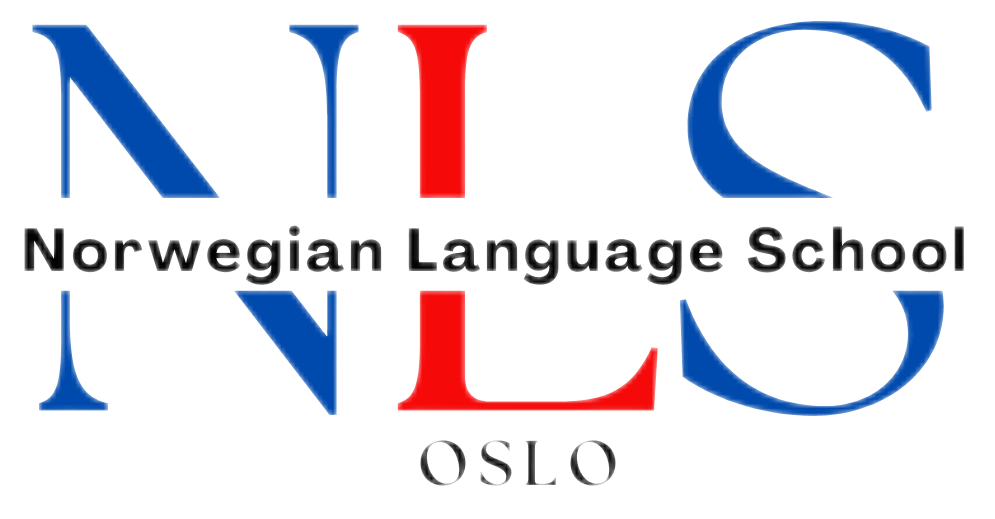

Achieving B1 in Norwegian for Citizenship – Your Roadmap to Success
Norway’s natural beauty, strong social fabric, and focus on work-life balance have attracted foreign residents for decades. For many, the ultimate goal is to become a Norwegian citizen and enjoy the benefits and responsibilities that status entails. Alongside other requirements like residency and clean criminal records, adult applicants aged 18 to 67 must prove their ability to speak Norwegian at a B1 (intermediate) level. While that might appear challenging at first, this article will lay out a step-by-step roadmap to help you systematically reach—and surpass—that oral proficiency threshold.
Table of Contents
Toggle1. Understanding the B1 Level in Practical Terms
Before charting your course, it’s helpful to understand exactly what it means to speak at a B1 level. According to CEFR guidelines, B1 speakers can:
-
Participate in everyday exchanges on familiar topics like work, hobbies, and current events.
-
Provide short explanations, opinions, and narratives without excessive pausing.
-
Interact in Norwegian in most routine social situations, albeit with some hesitation and occasional lapses in grammar or vocabulary.
Essentially, B1 is about practical communication. You don’t need perfect grammar or advanced vocabulary to pass a B1 oral test, but you do need to convey ideas clearly, maintain a conversation, and show sufficient linguistic comfort to handle day-to-day interactions.
2. Assessing Your Starting Point
Are you a complete beginner, or do you already have some familiarity with Norwegian? This starting level will dictate how aggressively you must study to reach B1. Use placement tests or speak to a language instructor who can gauge your approximate level. Beginners might be starting at A0 or A1, while some might already be comfortably at A2 and just need the final push toward B1.
3. Effective Strategies for Building Oral Proficiency
-
Immersion in Daily Life: If you live in Norway, try to limit the use of English in shops, public offices, or even at home with family. Force yourself to speak Norwegian, even if it’s broken at first. Local TV shows, radio programs like NRK, and online newspapers also help tune your ear to the language.
-
Structured Classes or Tutoring: Attend Norwegian courses at an adult learning center or sign up for private classes. Look for programs that emphasize speaking practice. Group classes can also be socially rewarding, allowing you to practice and learn from peers.
-
Targeted Vocabulary Building: B1-level tasks often revolve around discussing personal interests, work life, social issues, or aspects of daily living (e.g., going to the doctor, renting a flat). Focus on the words and phrases most relevant to these topics.
-
Regular Speaking Exercises: Reading grammar rules is helpful, but consistent speaking is how you internalize sentence structures. Engage in language exchanges with native Norwegian speakers. If you don’t have local contacts, try online platforms offering conversation practice.
-
Listening Drills: While not officially a separate requirement (the exam typically focuses on speaking), understanding the prompt or your examiner’s questions is crucial. Listening exercises—such as short audio clips or dialogue recordings—hone your comprehension and improve your reactions in conversation.
(Tip: If you want a fully guided approach that culminates in passing the oral exam, register for the Norskprøven preparation course at NLS Norwegian Language School, where lessons zero in on the specific skills needed to excel at B1.)
4. Overcoming Common Obstacles
-
Shyness or Fear of Mistakes: Language learners often hesitate to speak, worrying about errors. Yet mistakes are a natural part of the acquisition process. A supportive environment—perhaps a study group or sympathetic Norwegian friends—helps overcome this fear.
-
Inconsistent Practice: Sporadic study sessions make progress painfully slow. Aim for short, daily doses of Norwegian—20 to 30 minutes of speaking or active listening is more effective than a marathon session once a week.
-
Insufficient Vocabulary: Memorizing word lists can be dry. Instead, read news headlines or watch short videos in Norwegian. Jot down new phrases, then immediately try using them in sentences. This context-based approach helps you remember vocabulary more effectively.
-
Plateau Between A2 and B1: Many learners reach a basic functional level (A2) and then feel stuck. Overcome this by tackling slightly challenging texts or discussions. Push yourself to talk about more nuanced topics. It’s normal to feel some discomfort while bridging the gap.
5. Norwegian Language Courses and Study Materials
A variety of resources are available to help you progress to B1, including:
-
Municipal Adult Education Centers (Voksenopplæring): If you are a recognized refugee or on certain family reunification permits, you might qualify for free or subsidized Norwegian courses.
-
Online Platforms and Apps: Duolingo, Babbel, and Memrise are popular for building early vocabulary and grammar. Supplement them with real conversation practice or voice-based tutoring sessions, because apps alone seldom guarantee speaking fluency.
-
Course Books: Titles like “På Vei,” “Stein på stein,” or “Her på berget” cover levels from A1 up to B2. These are widely used in Norwegian classes. Focus on the materials specifically targeted at B1 to ensure you’re tackling the right content.
-
Private Language Schools: These schools offer structured lessons, flexible scheduling, and exam-focused materials. They often provide small-group classes or even one-on-one sessions.
(Need a dedicated exam-prep program? Check out the Norskprøven preparation course at NLS Norwegian Language School for personalized support and test-taking strategies.)
6. Timing Your Official Test
The standard oral exam for Norskprøven is held multiple times per year. Registration typically opens a few weeks before the exam date, and seats can fill quickly, especially in urban areas. Plan to register once you’ve reached a comfortable intermediate speaking level. If you take the test prematurely, you might fail or end up with an A2 rating, which is insufficient for standard applicants.
7. What the Oral Exam Entails
Specific test formats can vary, but generally you will be asked to:
-
Talk About Yourself: Your background, daily routine, or personal interests.
-
Describe a Picture or Scenario: You might see an illustration depicting everyday life—a family at dinner, a person at work—and need to discuss what’s happening.
-
Express Opinions on a Topic: You could be asked about current affairs, Norwegian culture, or your personal experiences.
-
Interact With an Examiner: The examiner might pose follow-up questions or present additional prompts based on your responses.
Your spoken responses are evaluated based on clarity, fluency, vocabulary range, and whether you can maintain a coherent conversation. Minor grammatical mistakes won’t necessarily prevent you from achieving B1 as long as communication remains effective.
8. Building Confidence With Mock Exams
Before you take the official exam, try simulating the test environment as closely as possible:
-
Timing: Stick to the time limits used in the real test (often around 20 minutes for an oral exam segment).
-
Recording Yourself: Use a phone or computer to record your spoken practice. Listen back to identify common mistakes or areas where you pause excessively.
-
Peer or Tutor Feedback: Practice with a teacher or partner who can play the role of examiner, prompting you with questions and hypothetical situations.
9. Alternative Paths: Exemptions and Special Cases
Remember, not everyone is held to the B1 standard:
-
Stateless or Certain Refugees Over 55: A2 might suffice.
-
Over 67 Years Old: No language test required.
-
Completed Norwegian Education: If you completed primary or secondary school in Norwegian, or certain higher education credits, you might be exempt.
These exemptions can significantly reduce the language hurdle, but they aren’t automatic. Documentation must usually be submitted to prove eligibility.
10. Social Integration Benefits of Reaching B1
Achieving B1 is about more than just ticking a box for citizenship. It unlocks a fuller experience of Norwegian life. You’ll find it easier to:
-
Build Friendships: Norwegians appreciate when newcomers make an effort to speak the local language, which can deepen social bonds and community connections.
-
Navigate Public Services: From the tax office (Skatteetaten) to healthcare (fastlege system), speaking Norwegian can expedite and clarify the process.
-
Enjoy Cultural Offerings: Films, television shows, radio discussions, or literature become more accessible once you can follow them without constant translation.
-
Pursue Career Opportunities: Employers in various sectors prefer or require Norwegian proficiency for customer-facing or advanced roles.
11. The Separate Social Studies Test
While not strictly about language, the knowledge test on Norwegian society and civics is also mandatory for citizenship (unless you qualify for an exemption). Some test questions will be in Norwegian at roughly A2/B1 reading level. By improving your Norwegian in preparation for the language exam, you’ll be better poised to handle the social studies portion without confusion.
12. Timeline for Your Citizenship Journey
If your current level is A2, set aside around six months of focused study to move to B1. This can vary based on personal aptitude, frequency of practice, and immersion opportunities. During this period, also gather other required documents for your citizenship application—proof of legal residence, police certificates, etc. Once you pass the oral exam, you’ll have that critical puzzle piece in place.
13. Celebrating Your Progress
Learning a new language, especially to a functional level, is a significant achievement. While the final goal might be passing B1 for citizenship, the personal growth and expanded worldview you gain are equally valuable. You’ll find that everyday activities—like chatting with colleagues, tuning in to a local podcast, or reading a Norwegian novel—become rewarding markers of your linguistic progress.
14. Common Pitfalls to Avoid
-
Procrastination: Don’t assume that because your residence permit is valid for a few more years, you can postpone learning indefinitely. Progressing to B1 can take time, so start early.
-
Overreliance on Translation: Continually translating from English to Norwegian in your head can slow fluency. Challenge yourself to “think in Norwegian” for basic phrases.
-
Ignoring Pronunciation: Grammar and vocabulary matter, but poor pronunciation can hinder comprehension. Work on the specific Norwegian sounds that don’t exist in your mother tongue.
-
Neglecting Real Interaction: Apps and grammar books help, but they cannot replicate genuine conversation. Ensure real-world practice is a consistent part of your study routine.
(Looking for personalized guidance to avoid these pitfalls? Enroll in the Norskprøven preparation course at NLS Norwegian Language School, where experienced instructors provide feedback, mock exams, and speaking drills.)
15. Additional Resources
-
UDI Website: The Norwegian Directorate of Immigration’s official site features up-to-date rules on citizenship, including language requirements and exemptions.
-
Kompetanse Norge/HK-dir: Handles the administration of Norwegian language tests. Their site offers sample tests, registration dates, and testing locations.
-
Norwegian Language Forums: Online communities on Facebook or Reddit (e.g., r/Norsk) where learners share experiences, resources, and tips.
16. Final Thoughts
Reaching B1-level Norwegian requires dedication, but it’s a worthy investment for anyone seeking Norwegian citizenship. Not only will you fulfill a legal requirement, but you’ll gain the ability to integrate more deeply into the country’s social fabric, enhance your employability, and truly feel at home in Norway. By combining structured study, consistent speaking practice, and a readiness to make and learn from mistakes, you can steadily climb the CEFR ladder.
When you’re finally able to hold a relaxed conversation about your day, your ambitions, or even your viewpoint on last weekend’s soccer match, you’ll realize just how far you’ve come. And, with that, the once-daunting B1 exam will seem like a natural step in your journey—not an insurmountable obstacle.
For those who prefer a guided, supportive environment that ensures steady progress, remember the Norskprøven preparation course offered by NLS Norwegian Language School. It can help you transform your speaking skills from shaky to solid, guaranteeing you’re well-prepared for the test and the broader demands of Norwegian life.
If you want to learn Norwegian, you can register for classes here. We look forward to hearing from you and helping you become fluent in Norwegian.





